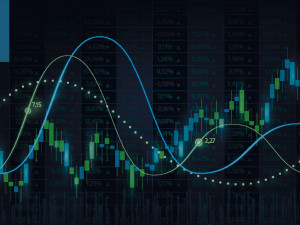
Manufacturing PMI falls to 60.4
Morning mid-market rates – The majors
3rd August: Highlights
- End of furlough scheme will add 150k to unemployment
- Vaccine slowdown could hit employment data
- Eurozone growing but lagging rest of G7
Stretched supply chains bring a slowdown and rise in costs
Transport and labour remain the most significant issues, while the overall recovery has seen costs increase, which will keep inflation on the front burner.
Supply chain difficulties and shortages of raw materials are unlikely to be resolved until next year, and this will drive the pace at which the recovery takes hold.
This data may be a factor when the MPC meets on Thursday. It will allow those who believe that support should stay in place until the recovery is sufficiently robust to stand on its own, while the hawks will point to the inflationary effects of rising costs.
No analysts seriously expect any change in either interest rates or the pace of support through asset purchases, but the conversation will be lively.
There is mounting speculation that the removal of the government’s Furlough Support Scheme could add 150k to unemployment over the next few months, although the pace of the recovery could see those workers reabsorbed into the market.
In a report released yesterday, the Government reported that house prices had increased by an unprecedented amount since the beginning of lockdown in March 2020. This was caused by a re-evaluation of needs which took place with the probability of a rebalancing of home working and was exacerbated by the introduction of the stamp duty holiday.
It is expected that the pace of increase in both price and activity will begin to cool once the economy is fully reopened.
The pound remained in a fairly tight range versus the dollar yesterday. It traded between 1.3922 and 1.3875, closing at 1.3884.
Versus the single currency, it was a similar story as traders positioned themselves ahead of the MPC meeting. The pound fell to a low of 1.1684 and closed at 1.1696.
Considering your next transfer? Log in to compare live quotes today.
Recovery becoming embedded but unlikely to speed up
The issue with studying data in the current environment is two-fold. First, demand is far outstripping supply which is leading to shortages and second, it is an ever-changing picture as restrictions are lifted then in some places reinstated primarily due to the Delta Variant and also due to some shortages of vaccine.
With the economy having surpassed the level it was at before the Pandemic began, it would appear to be time for the brakes to be gently applied, but the FOMC remains unconvinced. Jerome Powell is constantly expressing his demand that there is no chance of a backward step before he and his FOMC colleagues decide to begin to withdraw support.
The next FOMC meeting in late September should provide a clearer indication of the relative strength of activity, employment, and output.
One FOMC member, Federal Reserve Governor Christopher Waller, said yesterday that the taper should start in October as there is now no reason to go slow.
It is true to say that the economy is moving in the right direction towards the inflation and employment goals set out by Powell at the most recent FOMC, so it is probable that the era of easy money is ending.
Data reported yesterday showed that banks are easing restrictions on loans, which means that they also believe that conditions are improving.
Since the FOMC is missing a month, and the next meeting isn’t until next month, it will have the benefit of two sets of data for most economic drivers, starting with employment on Friday.
The dollar remains under pressure, with support at 91.8 close by. Yesterday, it fell to a low of 91.91 and closed at 92.08.
Spain and Italy show 3% growth in Q2
For this reason, it is expected that the Eurozone economy will exhibit growth at a lower level than most of the G7. One exception will be Japan, which is also inflicted with long-term problems, although of a different nature.
While growth will be lower, it is likely to be more consistent. The U.S. in particular will see higher growth overall but for the term of Biden’s first term in office, the level of artificial stimulus created by several Federal infrastructure projects will be high.
The most recent data for both the Eurozone and its component states shows that Spain and Italy have done particularly well despite the decimation of their tourist industries, where in Spain where it makes up 12.5% of GDP.
The significant improvement of these economies, closely followed by Greece, helped the overall economy grow by 2% in Q2. While unspectacular, it will have brought a smile to the faces of those in Frankfurt and Brussels,
ECB President, Christine Lagarde, will be keen not to choke off demand in these countries by reducing support at what will be a crucial time.
In Q2 of next year, there is likely to be some levelling of the playing field as the U.S. will be some way into its tapering of asset purchases while the ECB will be beginning. Neither is likely to cut interest rates until Q4 at the earliest, so the ECB will be playing catch up.
The start and pace of taper is one reason why it is hard to understand that the medium-term outlook for the euro is fairly positive. It could be that the market is more interested in a commitment to taper rather than the effect of it actually taking place.
Yesterday, the euro rose to a high of 1.1896 but couldn’t hang onto its gains and fell back to close at 1.1869.

About Alan Hill
Alan has been involved in the FX market for more than 25 years and brings a wealth of experience to his content. His knowledge has been gained while trading through some of the most volatile periods of recent history. His commentary relies on an understanding of past events and how they will affect future market performance.”



